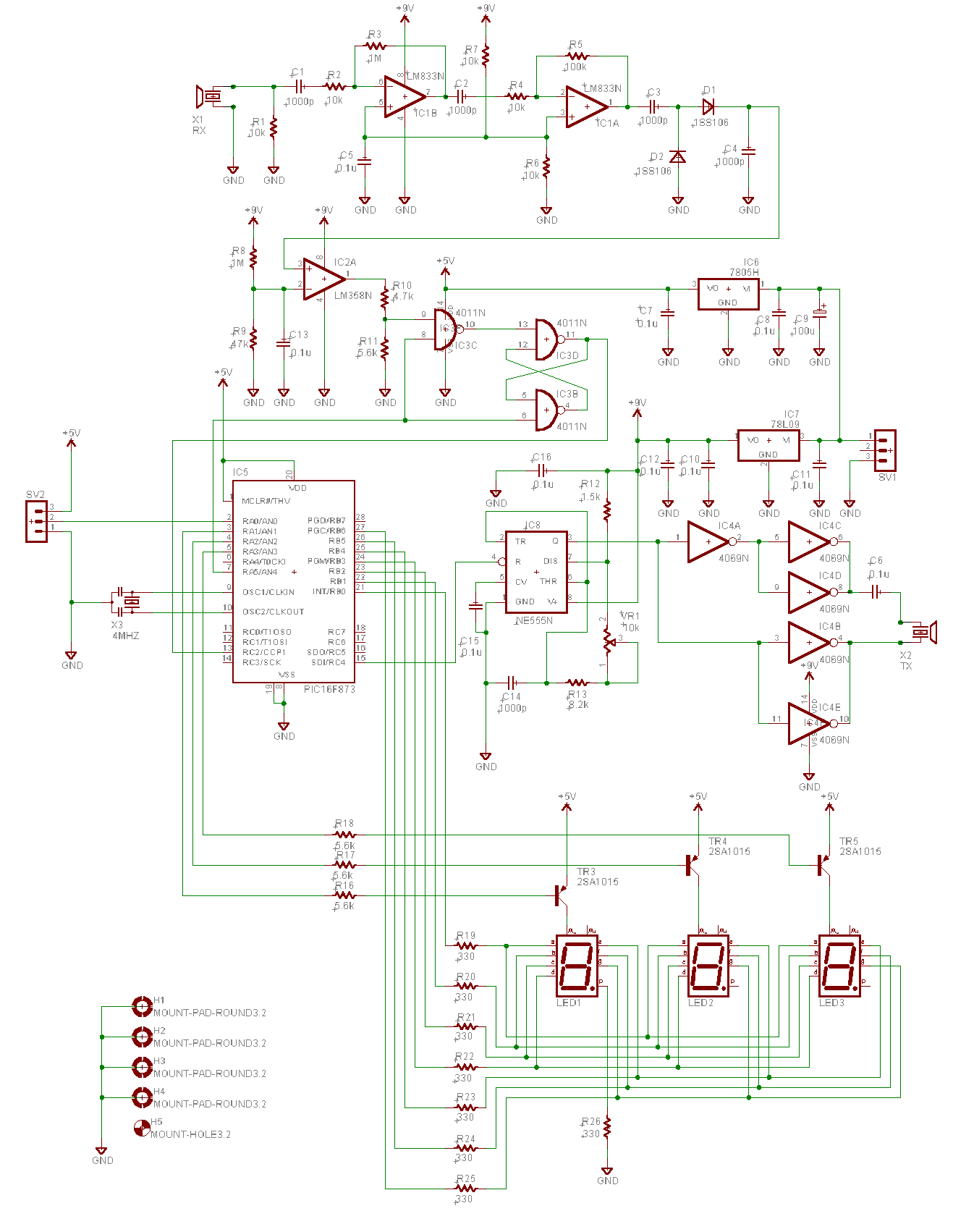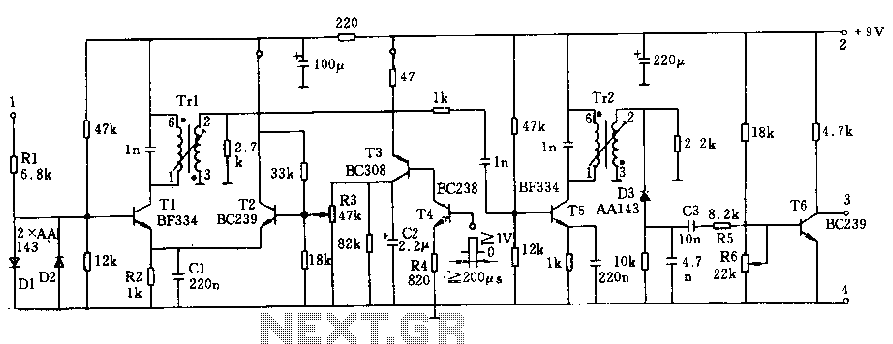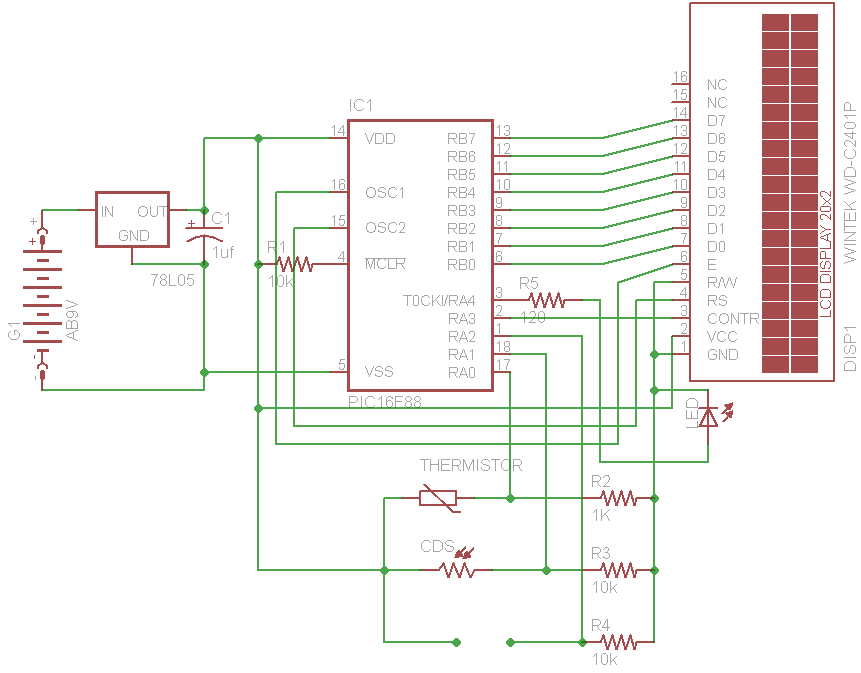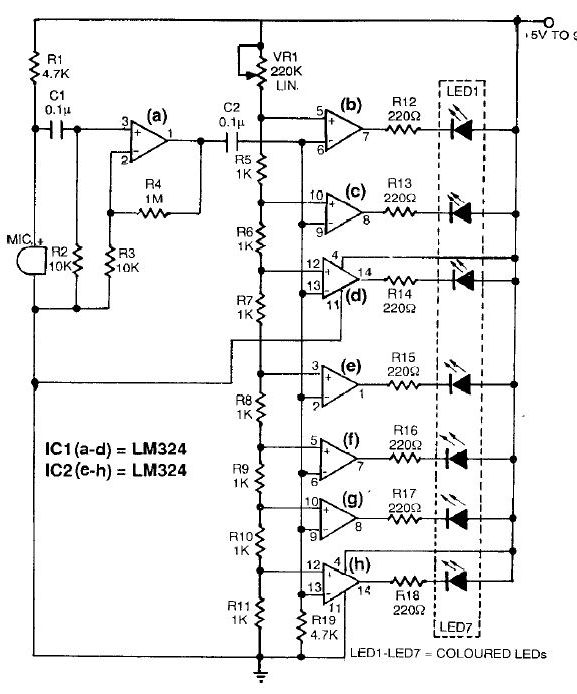
EAGLE Ultrasonic Range Meter

The oscillation circuit of the transmitter was added. An oscillation circuit using a 555 IC is implemented for a modified circuit. This allows for easy adjustment of the oscillation frequency, necessitating changes to the software.
The described circuit employs the 555 timer IC, a versatile and widely used component in various electronic applications. The 555 timer can function in different modes, including astable, monostable, and bistable configurations. In this context, it is utilized in astable mode to generate a continuous square wave output, which serves as the oscillation signal for the transmitter.
In the astable configuration, the 555 timer produces an oscillation frequency determined by the values of two resistors (R1 and R2) and a capacitor (C1) connected to its pins. The frequency (f) of the oscillation can be calculated using the formula:
f = 1.44 / ((R1 + 2*R2) * C1)
This equation illustrates that by varying R1, R2, or C1, the oscillation frequency can be adjusted to meet the specific requirements of the transmitter. The output frequency can be fine-tuned to ensure optimal performance, which is crucial for applications such as wireless communication, where precise frequency control is necessary.
The integration of the 555 timer circuit into the transmitter design necessitates corresponding adjustments in the software that governs the transmitter's operation. The software must account for the newly introduced oscillation frequency to maintain synchronization and functionality. This may involve recalibrating frequency settings, updating modulation schemes, or implementing additional control algorithms.
In summary, the incorporation of a 555 IC oscillation circuit into the transmitter design enhances frequency adjustability, thereby improving the overall performance and flexibility of the system. The changes in software are essential to fully leverage the benefits of the modified circuit, ensuring seamless operation and reliability in transmitting signals.The oscillation circuit of the transmitter was added. An oscillation circuit by 555 IC is used for a modified circuit. This is to adjust an oscillation frequency easily. Thereby, it is necessary to change the software. 🔗 External reference
The described circuit employs the 555 timer IC, a versatile and widely used component in various electronic applications. The 555 timer can function in different modes, including astable, monostable, and bistable configurations. In this context, it is utilized in astable mode to generate a continuous square wave output, which serves as the oscillation signal for the transmitter.
In the astable configuration, the 555 timer produces an oscillation frequency determined by the values of two resistors (R1 and R2) and a capacitor (C1) connected to its pins. The frequency (f) of the oscillation can be calculated using the formula:
f = 1.44 / ((R1 + 2*R2) * C1)
This equation illustrates that by varying R1, R2, or C1, the oscillation frequency can be adjusted to meet the specific requirements of the transmitter. The output frequency can be fine-tuned to ensure optimal performance, which is crucial for applications such as wireless communication, where precise frequency control is necessary.
The integration of the 555 timer circuit into the transmitter design necessitates corresponding adjustments in the software that governs the transmitter's operation. The software must account for the newly introduced oscillation frequency to maintain synchronization and functionality. This may involve recalibrating frequency settings, updating modulation schemes, or implementing additional control algorithms.
In summary, the incorporation of a 555 IC oscillation circuit into the transmitter design enhances frequency adjustability, thereby improving the overall performance and flexibility of the system. The changes in software are essential to fully leverage the benefits of the modified circuit, ensuring seamless operation and reliability in transmitting signals.The oscillation circuit of the transmitter was added. An oscillation circuit by 555 IC is used for a modified circuit. This is to adjust an oscillation frequency easily. Thereby, it is necessary to change the software. 🔗 External reference





